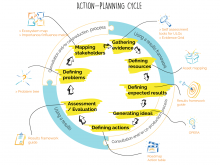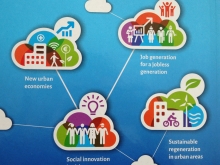Amersfoort
Amersfoort was selected by the Dutch government in 1970 as a ‘city for growth’ as part of a national urban planning strategy. The city rapidly expanded northward, driven by modern architecture and city planning. Its population is currently 150,000 and is expected to reach 160,000 by 2020. The profile of its residents is relatively young, with middle to high incomes. Around 36% of the population has been through higher education, compared with the national average of 28%. It is located within the triangle of Amsterdam, Rotterdam and Utrecht. A major railway hub, the city is also a junction for several motorways and is just over half an hour by train from Amsterdam airport. The combination has helped make the city a popular destination for business conferences and trade fairs.
Amersfoort was founded on the banks of the River Eem, formerly called the Amer. Three types of landscape surround the city, with sand dunes and pine forests to the west and south, and farmland to the east. Northward lies the flat, open, meadow landscape of a former polder.
The city has a historic city centre with monuments dating back to 1300. After a flourishing period in the late Middle Ages, its population remained fairly stable in a rural area. However, from the end of the 19th century onwards, the city began to grow with its connection to the first Dutch railway network. On one side of the railway, a green suburb developed with fine houses and monuments. On the other side, cottages were built for railway workers. After World War II, the city continued to gradually expand.
SOME RELATED NETWORKS
Sustainable food
REFILL
Article
Experimenting with governance
Article
A city fighting climate change: How Nantes got its citizens to talk energy transition
Article
URBACT, another paradigm for European cities
Article
REFILL MATCH-MAKERS
Article







